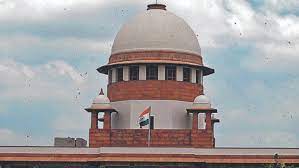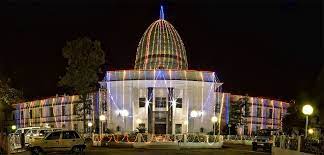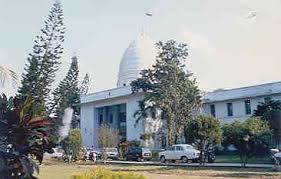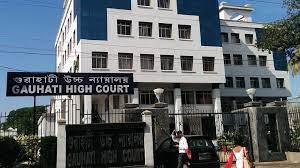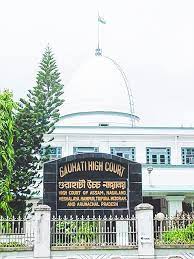Whereby all the accused who stood convicted by the Trial Court for the offences under Sections 302, 307, 323, 324, 325, 447, 147 /148 read with Section 149 of Indian Penal Code, were acquitted for the major offences under Sections 302 and 307, and were convicted only for the offences under Sections 147, 148, 323, 324, 325/149. Their sentences were also reduced to the period already undergone by them, which roughly varied from two to five years. (Para 1)
Out of all the prosecution witnesses which were examined by the prosecution, Rami (PW-2) is the most important witness, as she was the wife of the deceased and at the relevant point of time was working in the field, along with her husband. In addition, this witness had sustained grievous injuries in the incident, including a near fatal injury on her head and therefore the testimony of this particular witness is the most credible evidence produced by the prosecution before the Trial Court. The examination-in-chief and cross examination of Rami was done before the Trial Court on 27.11.2001. She was cross examined at length by the defence, but nothing has come out in the cross examination, except minor discrepancies. These discrepancies as we shall be examining later do not discredit the witness as has been held by the High Court. (Para 7)
The statement given by PW-2 before the Police under Section 161 Cr.PC, during investigation were relied by the defence in order to contradict the witness as to her statement in her examination-in-chief. The witness in her earlier statement before the police, had said that the accused Jethnath was working on his adjacent field and he had some altercation with the deceased regarding their boundary in which heated arguments were exchanged between the two. Jethnath, then, raised an alarm which resulted in his sons and relatives coming to the spot, who were all armed with weapons. It is true that this fact of Jethnath working in the field and the altercation she did not state in her examination-in-chief. The High Court thus finds a discrepancy in the statement of PW-2 made under section 161 Cr.PC and her examination-in-chief, which it believes to be sufficient to discredit this witness. (Para 16)
As we have already stated this particular witness i.e. PW-2 is an injured witness and wife of the deceased, who has given her clear and unambiguous statement in her examination-in-chief and though she was cross-examined at length this witness stood her ground. Moreover, it is her husband who has been killed by the assailants. Why should she be accusing wrong persons? (Para 17)
In our opinion, the High Court has given undeserved credit to the evidence placed by the defence in this regard. The Trial Court on the other hand had examined this aspect in detail and ultimately did not find the evidence placed by defence as credible. It is not very difficult for us to appreciate why this was done. (Para 24)
This the Trial Court rightly held could be caused due to the force this assailant had exerted in attacking the deceased. Moreover, the injuries were in any case simple in nature. (Para 24)
The reasons assigned for disbelieving the statement of PW-2 by the High Court are not correct. The High Court discredits the statement of PW-2 because of the discrepancies in her earlier statement given under Section 161 Cr.P.C., and the one given in her examination-in-chief. This as we have already discussed was not sufficient to totally discredit an injured eye witness. Apart from this eye-witness, there were other eye-witnesses as well, which we have referred above. Further, there is also the recovery made of the weapons and the blood-stained cloth of the accused. There is nothing to doubt either the recovery or the manner in which the recovery has been made. The conclusion derived by the High Court that the assailants were not having common intention or common object of killing deceased Chandernath is not entirely correct. (Para 27)
We are also of the opinion that the possibility of the incident not being premeditated, cannot be totally disregarded, considering the overall ‘circumstances’ of the case, as urged before us and even considering the contradictions in the two statements of PW-2. We do not discredit the evidence of PW-2. She is a reliable witness. But only to the extent of what led to the incident, we are inclined to grant a limited benefit to the accused but not like the one given by the High Court. We are of the opinion that this case is of culpable homicide not amounting to murder, and not of murder. There were contradictions in the two statements of PW-2 as we have discussed in the preceding paragraphs. These contradictions, however, are not enough to completely discredit this witness. All the same, these contradictions, in the given fact of the case, do give a benefit of doubt to the accused as to the case of premeditated attack of the prosecution. In our opinion, therefore the attack would come under Exception 4 to Section 300, the attack not being premeditated, but was, “in a sudden fight in the heat of passion upon a sudden quarrel and without the offender having taken undue advantage or acted in a cruel or unusual manner.” (Para 30)
Both the appeals are allowed and the order of the High Court dated 08.08.2007 is liable to be set aside and is hereby quashed. As far as the order of the Trial Court is concerned, we convert the findings of Section 302 to that of Section 304 part I IPC, and that of Section 307 to Section 308 IPC. (Para 31)
SUPREME COURT OF INDIA
2023 STPL(Web) 392 SC
[2023 INSC 957]
Birbal Nath Vs. The State Of Rajasthan & Ors.
Criminal Appeal No. 1587 of 2008 with Criminal Appeal No. 1588 of 2008-Decided on 30-10-2023
https://stpllaw.in/wp-content/uploads/2023/10/2023-STPLWeb-392-SC.pdf

